What an interesting workshop! After spending a decent portion of a day watching Rhino tutorials, I was a bit apprehensive about having to utilize the program in the workshop that night. Fortunately, I was paired with Kate and Xinran, and the 3 of us were able to make our through the exercise.
After a couple trial runs of trying different pictures and seeing how the output changed, we decided to use our own faces as the imagery for this workshop. After increasing the contrast, Xinran layered all of our faces into one image. We then agreed that it might be interesting to focus on one area of the face; we chose the eye.



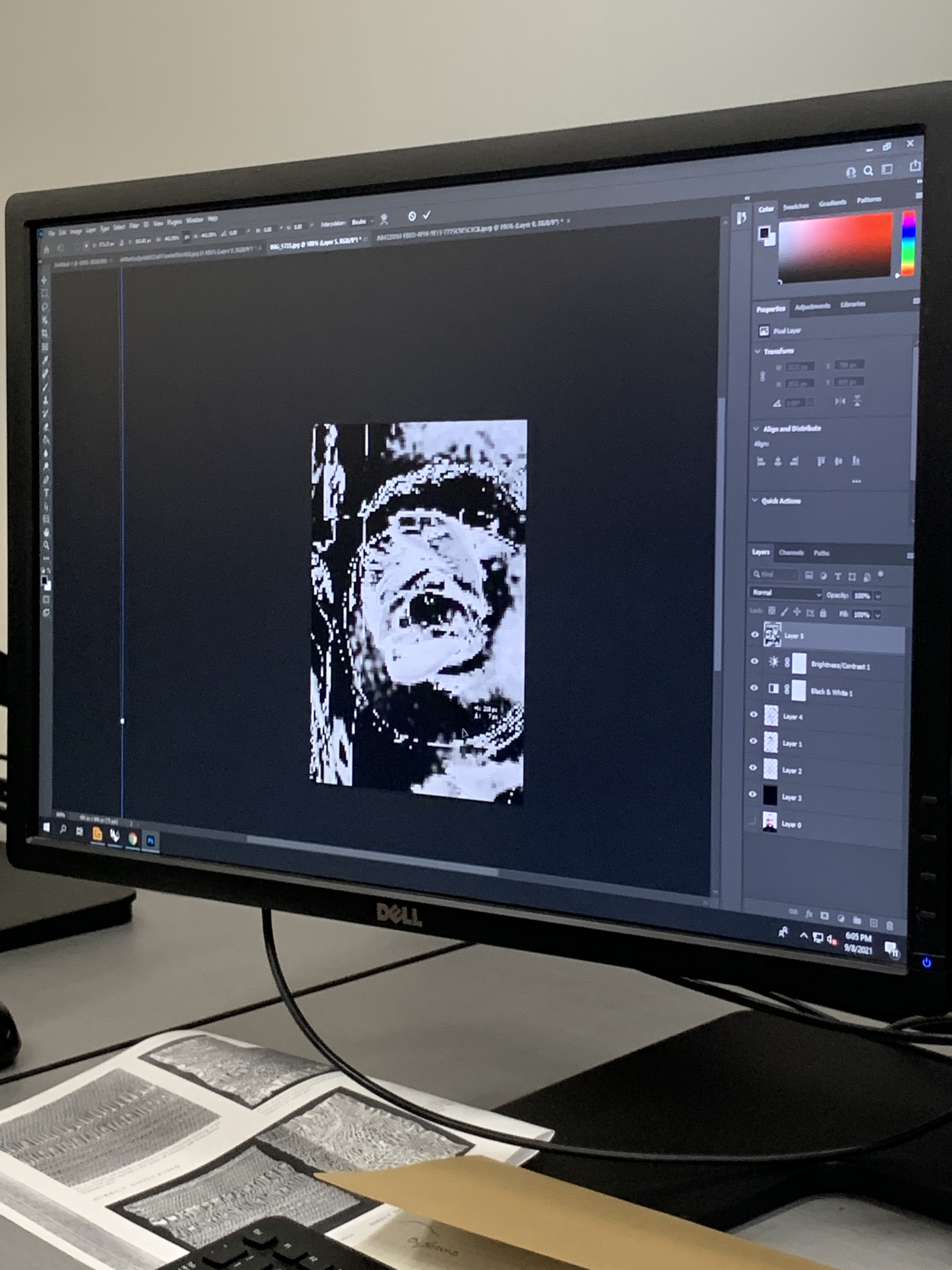
After creating new shapes for mapping purposes, we next played with the settings in Grasshopper in order to get an image that was interesting to us. After choosing an interesting image, we “baked” the file and then printed it on the plotter, which I had never seen in action before. It was cool to watch the lines we drew on screen be drawn with an actual pen by the plotter.
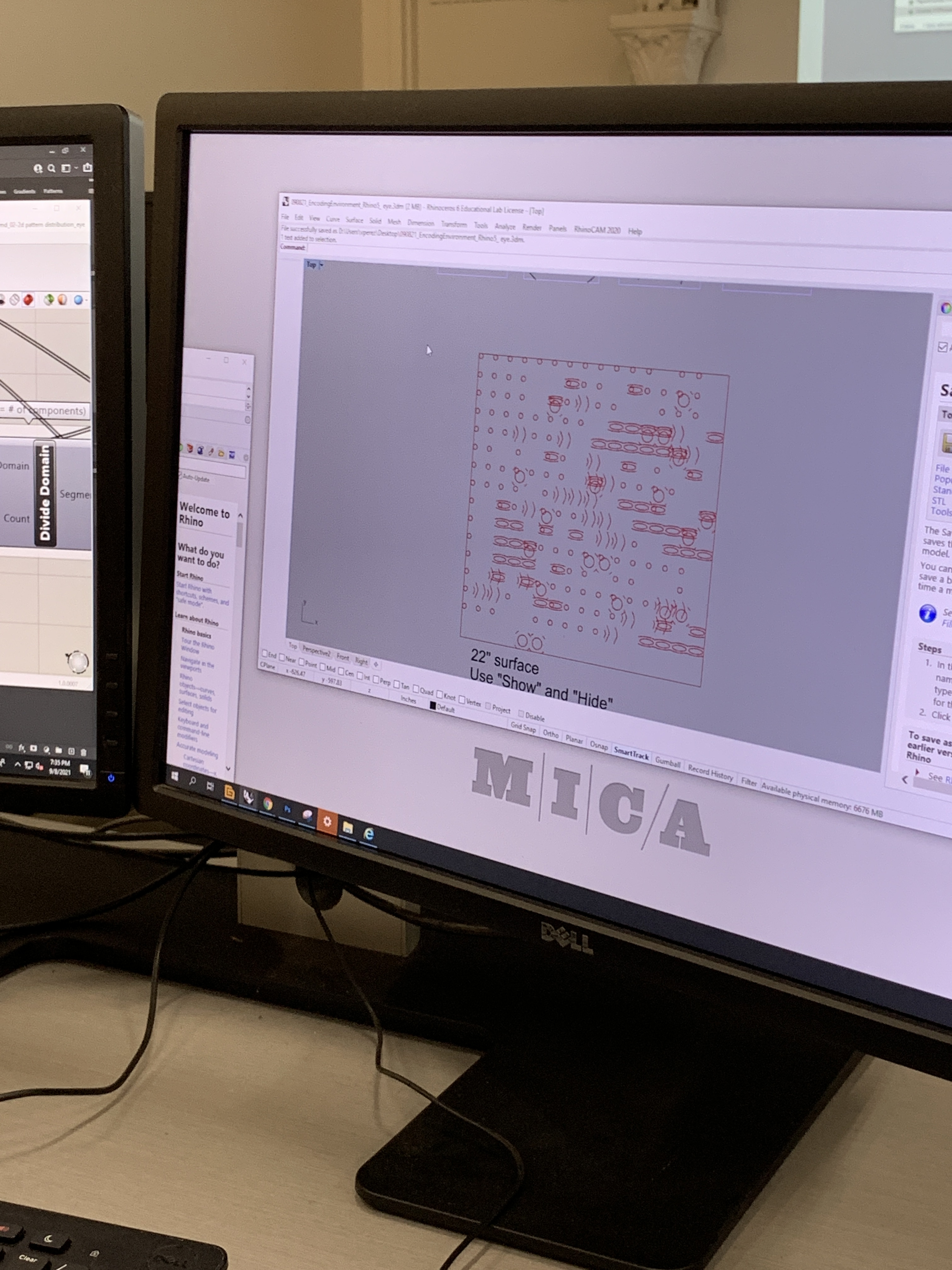
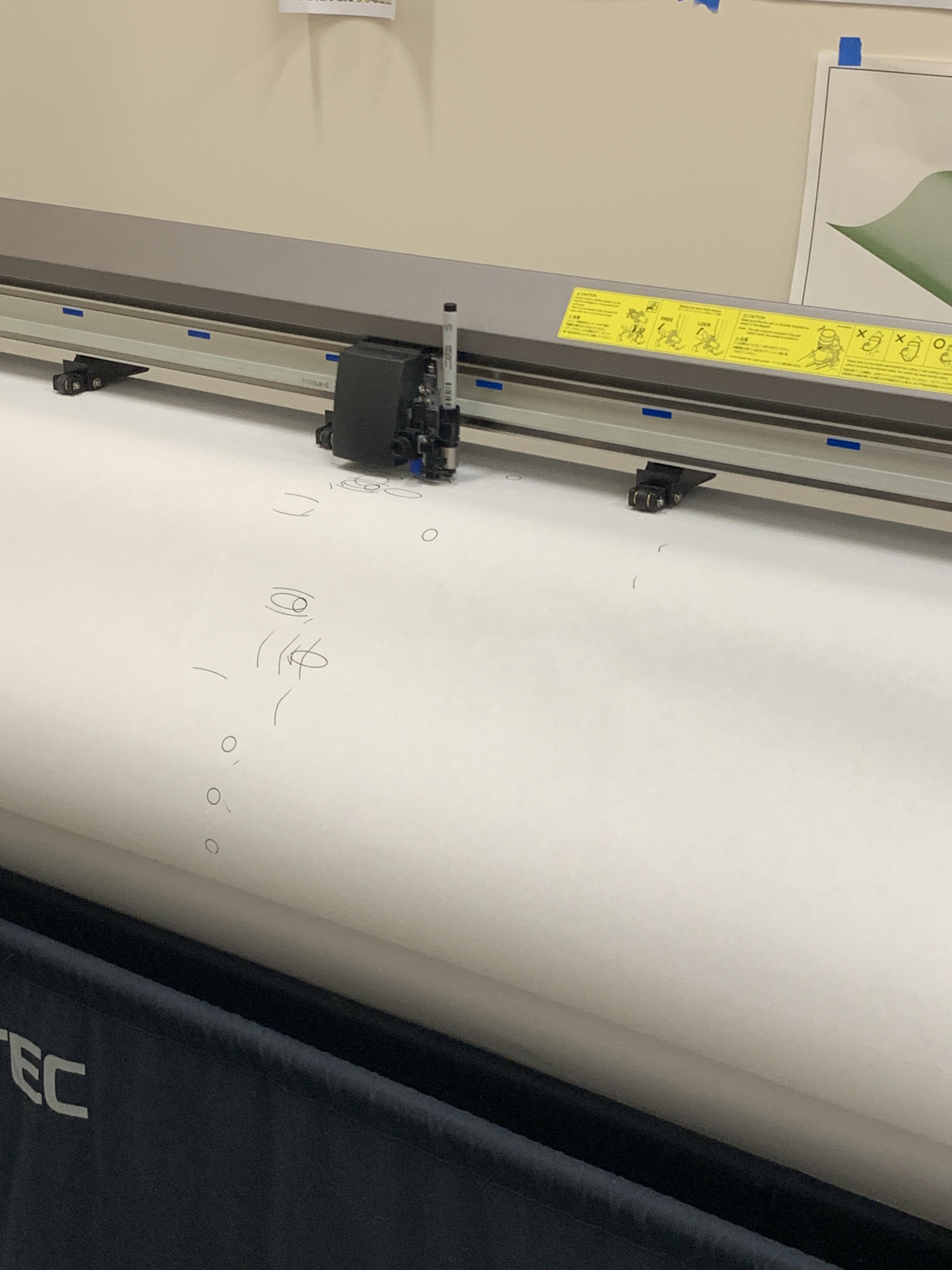
Much more interesting than watching paint dry, it still took a while for the plotter to be finished with our image. After stapling our image to what felt like an old drop ceiling tile (the ability of this material to compress slightly actually made the staples easier to remove when we were done, which was much appreciated), we stretched our fabric over the top and stapled it in place. We stretched it as tightly as possible, with one of us stapling while the other two helped hold the fabric taut.

Now, onto the hot gluing. I can’t remember the last time I used a hot glue gun, but this is certainly the first time I used it as part of a workshop that utilized modeling software. It was nice to make something physical with my hands! That was a thing I missed during the pandemic. We each started in our own section of the image and starting following our drawing, letting one shape dry before returning to add any overlapping shape that was needed. We thought this might help keep the glue lines cleaner. It didn’t take us too long to finish gluing, and I was certainly excited to see the results!

I am not sure what I was expecting to see when we loosened our fabric, but it was definitely weird looking! It was very interesting to see the effects certain types of lines created; our ‘parentheses’ gave the fabric a weird, cupped look where the glue followed the curves. Between that and the circles/donuts, it had a very alien, almost skin-like appearance to it, and it was awesome! I wondered out loud if there was a way to use these techniques and provide a tactile map that one could feel with their hands. Granted, the size that would need to be would be staggering, and the lines would need to be much more precise to be off use, but it was still cool to think of possibilities.


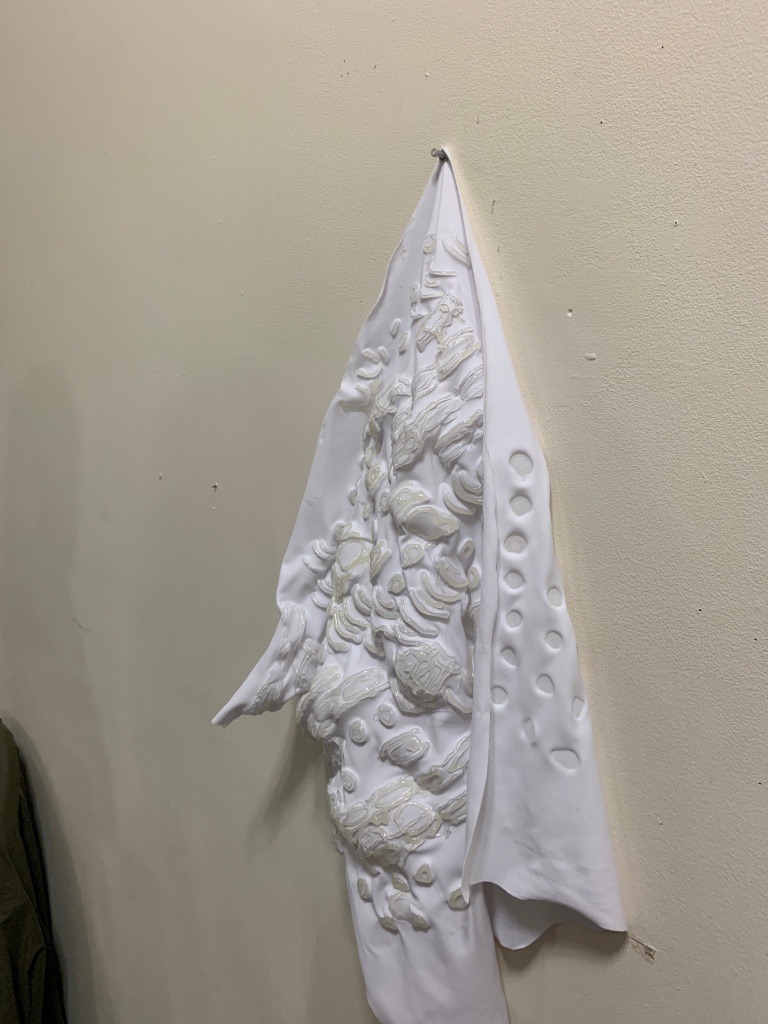
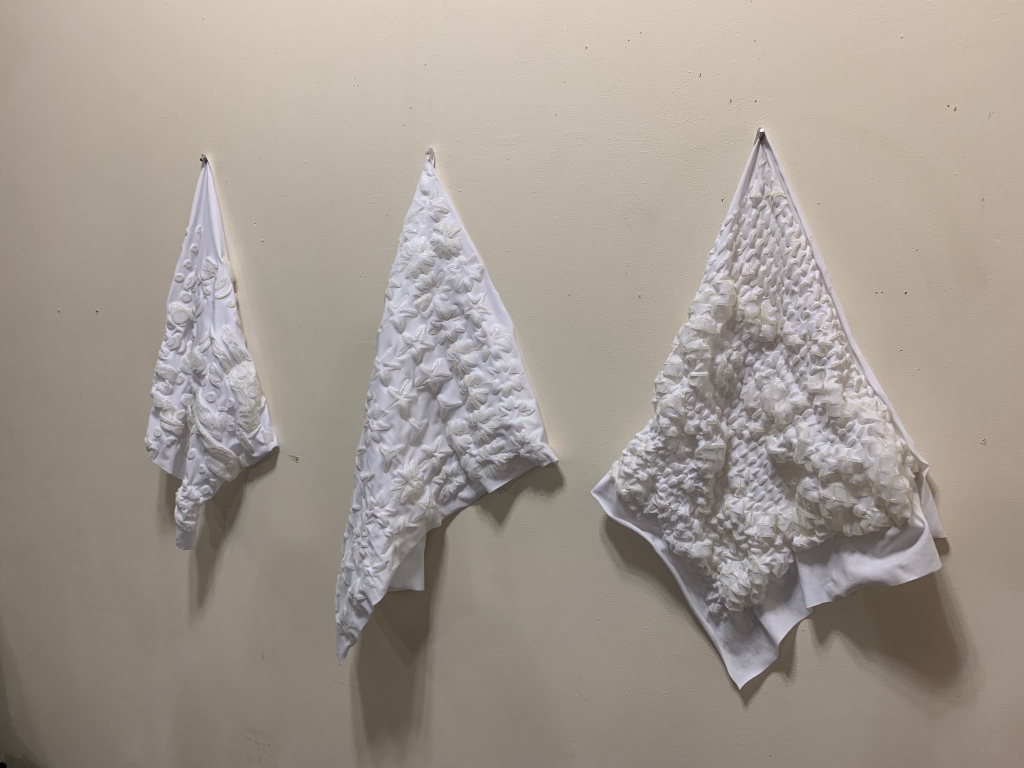
Admittedly a bit enamored with the results of this project, Annette gave me a couple extra pieces of fabric to experiment with at home. Feeling a bit stuck in my personal practice lately, I mind mapped/impulse wrote some words that have been at the forefront of my mind lately. I was merely curious what it would look like if the image was words instead of shapes/lines (though, what are letters but a bunch of lines?). It was fun to try a couple different line techniques and note the different results. I suspect I am not done experimenting with this yet, I am still thinking about that map idea…But need more glue sticks, first!

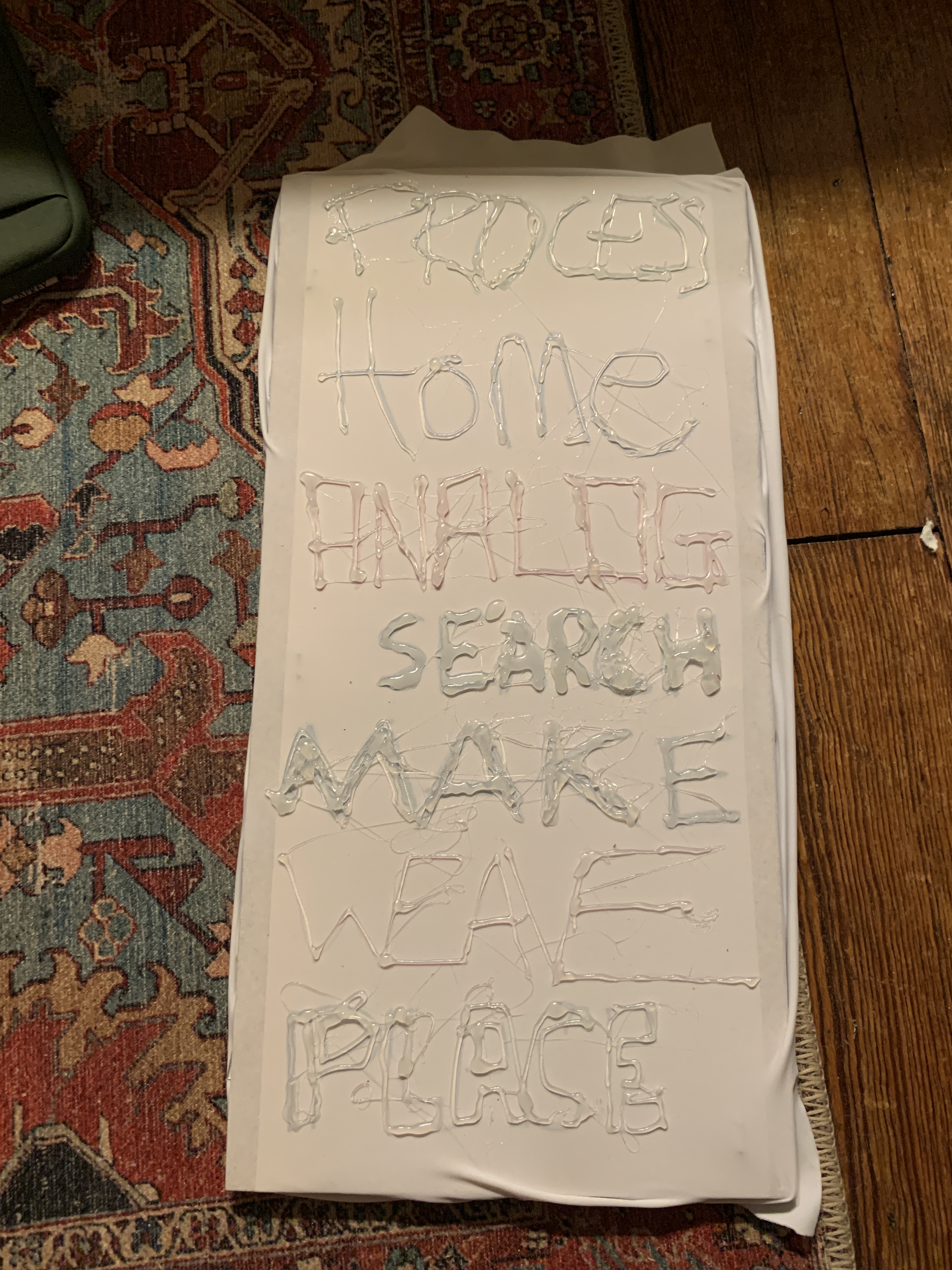

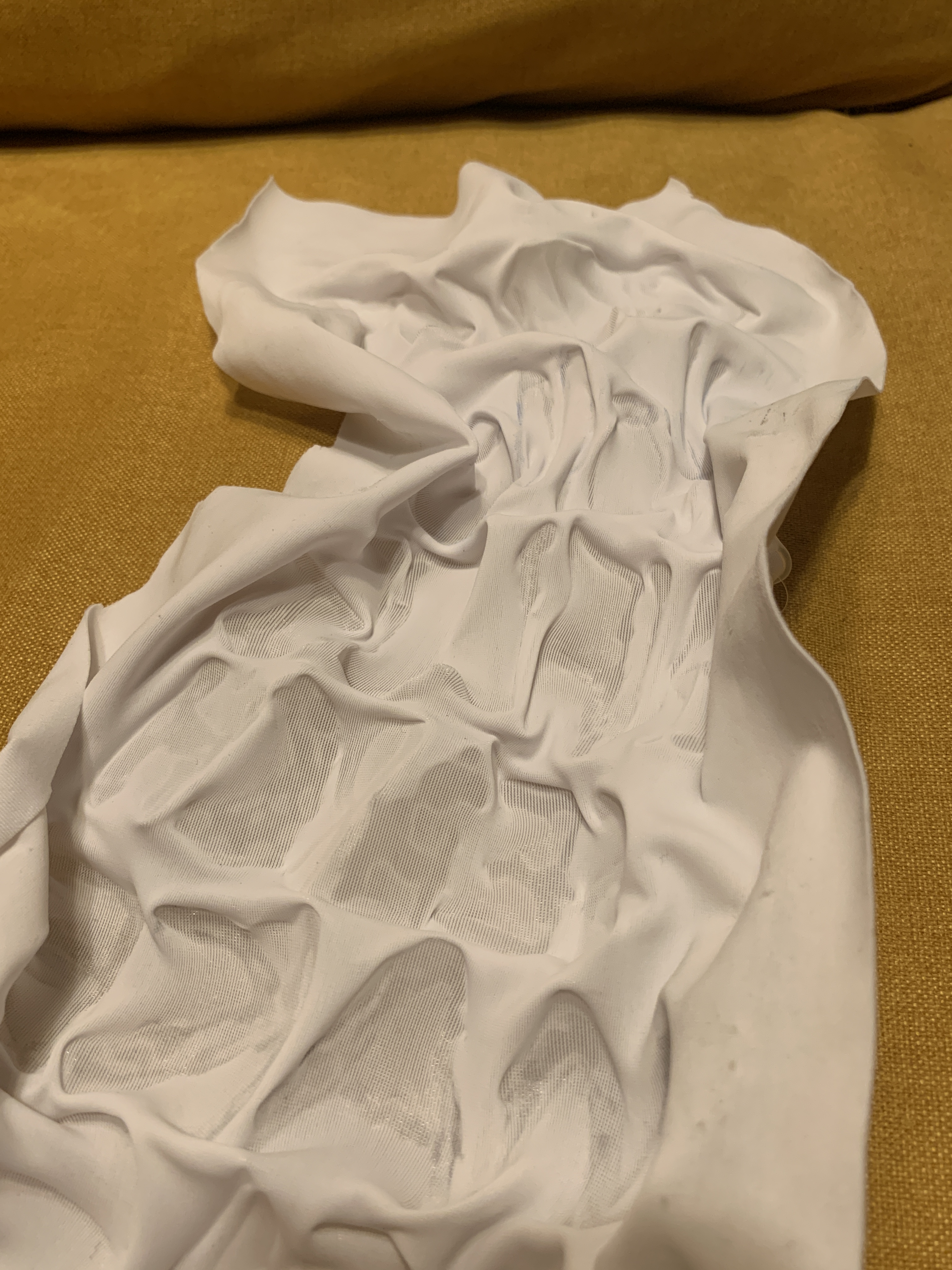
The Hubble people (local, on Hopins campus) did a galaxy map: https://hubblesite.org/contents/media/images/2020/15/4664-Image.html?news=true
https://www.space.com/24233-3d-printed-hubble-photos-blind-aas223.html
LikeLike